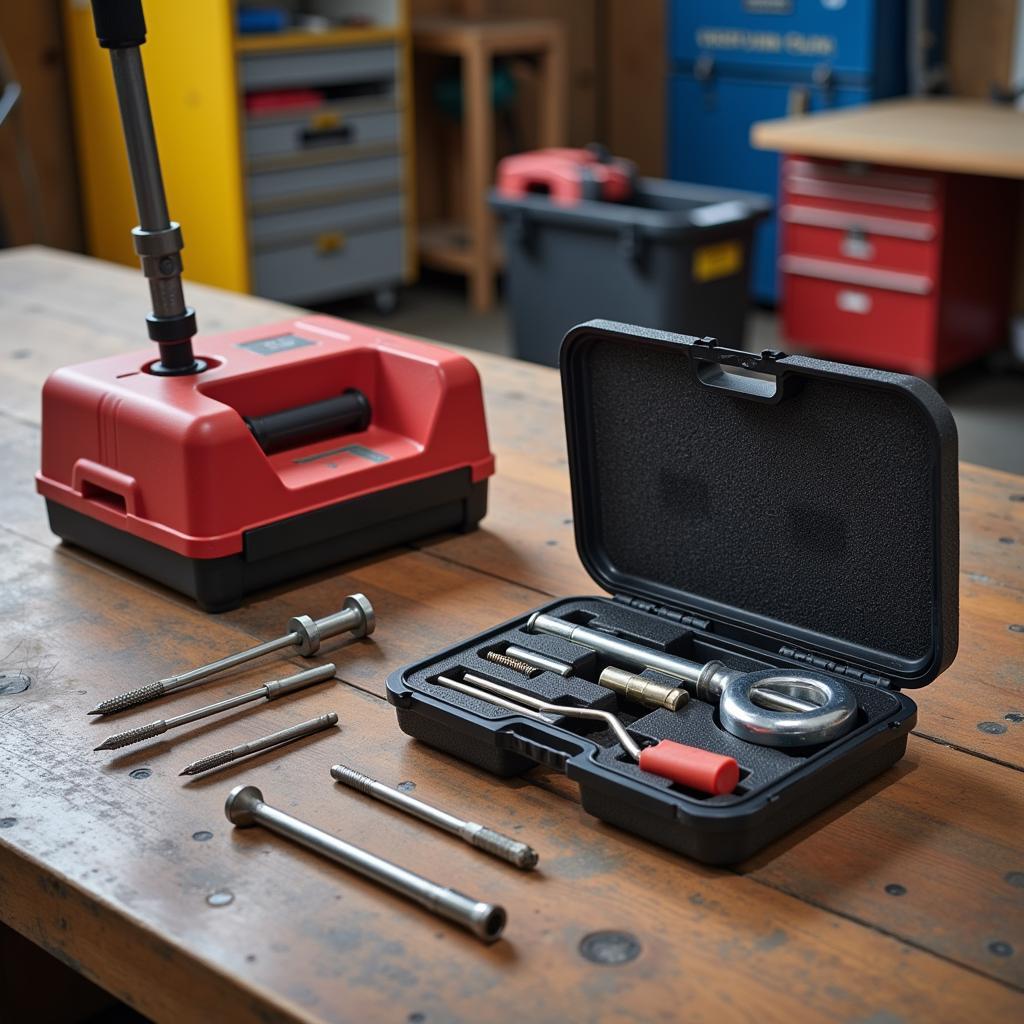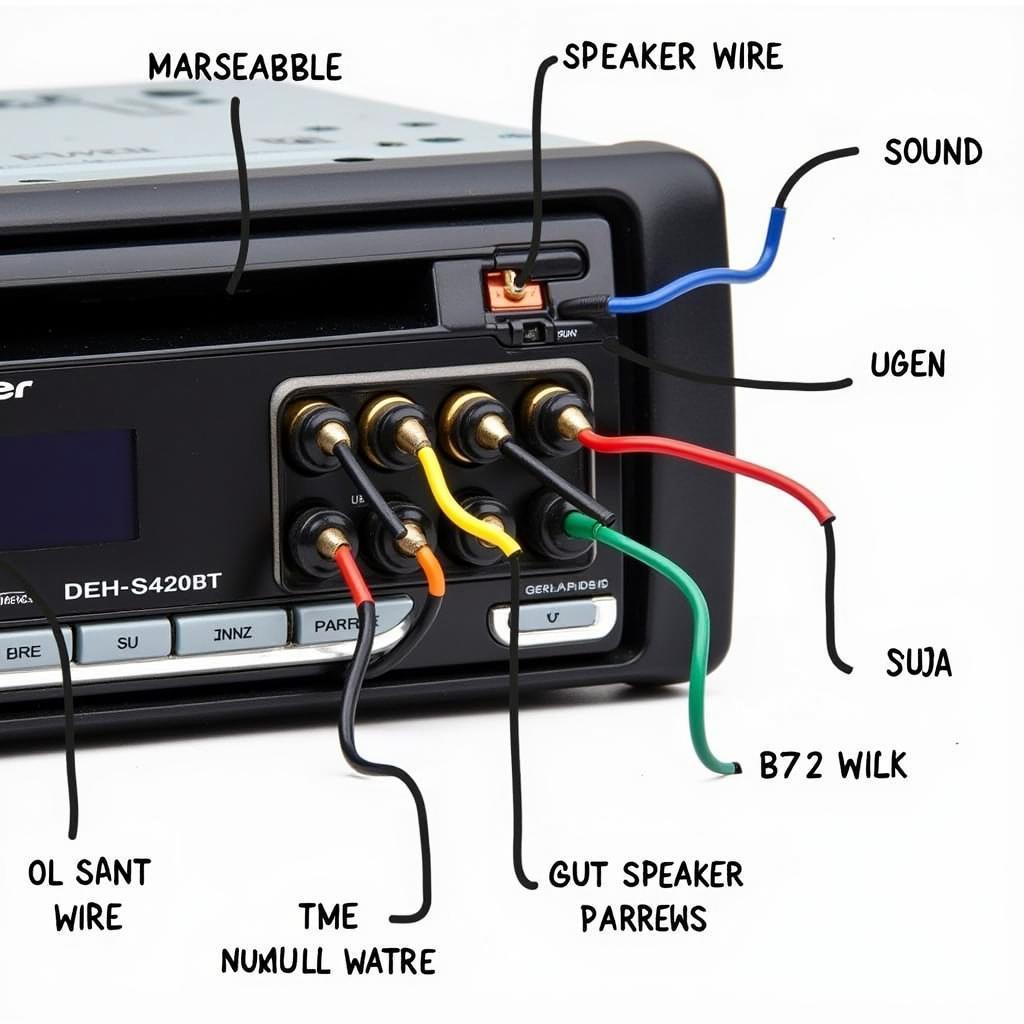Anti-theft screws are designed to deter thieves, but they can also be a headache for the average car owner. Knowing how to screw in anti-theft screws properly is essential for anyone who works on their own vehicle. This article will guide you through the process, offering tips and tricks from a diagnostic, programming, and remote software installation expert in the automotive electrical field. We’ll discuss the tools you need, common problems, and even address how seemingly unrelated issues, like a dead battery or alternator or starter, can sometimes be mistaken for a security screw issue.
Understanding Anti-Theft Screws
Anti-theft screws come in various shapes and sizes, making them challenging to remove without the correct tool. This is intentional, of course! Their purpose is to protect valuable car parts like wheels, stereos, and license plates from being easily stolen. But this added security can be frustrating when you need to perform routine maintenance or repairs.
 Various Anti-Theft Screw Types
Various Anti-Theft Screw Types
Understanding the type of anti-theft screw you’re dealing with is the first step. This knowledge will help you select the appropriate removal tool.
Tools for Removing and Installing Anti-Theft Screws
Using the wrong tool can damage the screw head, making removal even more difficult. Investing in a good quality anti-theft screw removal kit is crucial. These kits often contain a variety of bits to match different screw types.
- Keyed Sockets: These are specifically designed to fit the unique pattern of the anti-theft screw head.
- Extractor Sockets: These grip onto damaged screw heads, allowing you to remove them.
- Screw Removal Pliers: These can sometimes grip the outer edges of the screw head, providing enough leverage for removal.
 Essential Anti-Theft Screw Removal Kit
Essential Anti-Theft Screw Removal Kit
If you can’t get the screw out, don’t panic. Sometimes, a seemingly simple problem like a dead battery can mask other issues. Check out this article on car battery is good but not starting for more information.
How to Screw in Anti-Theft Screws: A Step-by-Step Guide
-
Identify the Screw Type: Determine the specific type of anti-theft screw you’re working with. Refer to your owner’s manual or search online for images to match your screw.
-
Select the Correct Tool: Choose the corresponding bit or socket from your anti-theft screw removal kit.
-
Apply Firm Pressure: Press the tool firmly into the screw head to ensure a secure grip and prevent slippage. This is especially important with one-way screws, which can easily be stripped.
-
Turn Slowly and Steadily: Turn the tool slowly and steadily to avoid damaging the screw head or the surrounding material.
-
Use Lubricant (If Necessary): If the screw is particularly stubborn, applying a small amount of penetrating oil can help loosen it.
Common Problems and Solutions
-
Stripped Screw Head: If the screw head is stripped, try using an extractor socket or screw removal pliers. If these don’t work, you may need to drill out the screw. Sometimes a car may not start due to electrical issues which might be confused for a screw issue. If you experience this, refer to this helpful guide: my car wont start but has power.
-
Incorrect Tool: Double-check that you’re using the correct tool for the screw type.
-
Excessive Force: Applying too much force can damage the screw head. Use firm, steady pressure instead.
“Prevention is better than cure,” says John Smith, a seasoned automotive electrician. “Always use the correct tools and apply the right amount of pressure to avoid stripping the screw head in the first place.”
Why Knowing How to Screw in Anti-Theft Screws is Important
Understanding this process can save you time, money, and frustration. You’ll be able to perform basic car maintenance without needing to take your car to a mechanic for simple tasks. It’s also important to be aware that other car issues can sometimes appear as security-related problems. For instance, a discharged battery can lead to various starting problems. This article on maserati ghibli battery dead demonstrates how even luxury cars can be affected by simple battery issues.
 Properly Screwing in an Anti-Theft Screw
Properly Screwing in an Anti-Theft Screw
“Having the right tools and knowledge empowers car owners,” adds Jane Doe, a leading automotive security specialist. “Being able to handle anti-theft screws yourself can provide significant peace of mind.” Knowing how to deal with car problems can also prevent unnecessary stress, especially when dealing with issues like a car battery discharging very fast.
Conclusion
Knowing how to screw in anti-theft screws is a valuable skill for any car owner. With the right tools and techniques, you can easily handle these security screws and avoid potential problems. Remember to always identify the screw type, select the appropriate tool, and apply firm, steady pressure. Mastering this skill will give you the confidence to tackle various car maintenance tasks.
FAQ
-
What are the most common types of anti-theft screws used in cars?
-
What should I do if I strip the head of an anti-theft screw?
-
Where can I buy a good quality anti-theft screw removal kit?
-
Are there any alternatives to using anti-theft screws?
-
How can I tell if I have the correct tool for my anti-theft screw?
-
What are some common mistakes people make when working with anti-theft screws?
-
How often should I check my anti-theft screws?


